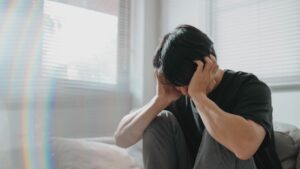In the realm of mental health, finding solace and self-expression through aesthetics has emerged as a powerful tool for many individuals. The fusion of creativity and well-being has given rise to what is now known as “mental health aesthetic.” This concept delves into how visual elements, artistic pursuits, and personal style can intertwine with mental wellness, offering a unique avenue for individuals to explore and communicate their inner experiences.
Exploring the intersection of mental health and aesthetic expression opens doors to a diverse range of interpretations and manifestations. From soothing color palettes to expressive art forms, each aspect of this aesthetic journey holds the potential to convey emotions, foster healing, and promote self-care. By embracing the concept of mental health aesthetic, individuals can embark on a journey of self-discovery and empowerment, using creativity as a means to navigate the complexities of their inner worlds.
Mental Health Aesthetic
 Art and design have increasingly become mediums for raising awareness and promoting discussions around mental health. With the rise of social media platforms, individuals and artists are leveraging visual elements to express their struggles, triumphs, and emotional journeys. Through various art forms such as paintings, illustrations, photography, and digital art, people are shedding light on mental health issues, reducing stigma, and fostering a sense of community support. This integration of art and mental health not only encourages open conversations but also provides a platform for individuals to share their experiences creatively.
Art and design have increasingly become mediums for raising awareness and promoting discussions around mental health. With the rise of social media platforms, individuals and artists are leveraging visual elements to express their struggles, triumphs, and emotional journeys. Through various art forms such as paintings, illustrations, photography, and digital art, people are shedding light on mental health issues, reducing stigma, and fostering a sense of community support. This integration of art and mental health not only encourages open conversations but also provides a platform for individuals to share their experiences creatively.
Aesthetics play a crucial role in shaping our psychological well-being by impacting our perceptions, emotions, and overall mental states. The visual appeal of our surroundings, including colors, textures, and designs, can significantly influence our mood and cognitive processes. Studies have shown that exposure to aesthetically pleasing environments can reduce stress, enhance relaxation, and improve focus and productivity. By curating spaces that resonate with positive aesthetics, individuals can create conducive environments that support their mental health and emotional well-being.
Key Elements of Mental Health Aesthetic
 Color psychology plays a significant role in enhancing mood and influencing mental well-being. Colors have the power to evoke specific emotions and affect individuals’ perceptions of a space. For example, warm tones like red, orange, and yellow can stimulate energy and creativity, while cool tones such as blue and green promote calmness and relaxation. By incorporating these color schemes into living spaces or creative endeavors, individuals can create environments that positively impact their mental health.
Color psychology plays a significant role in enhancing mood and influencing mental well-being. Colors have the power to evoke specific emotions and affect individuals’ perceptions of a space. For example, warm tones like red, orange, and yellow can stimulate energy and creativity, while cool tones such as blue and green promote calmness and relaxation. By incorporating these color schemes into living spaces or creative endeavors, individuals can create environments that positively impact their mental health.
Embracing minimalism in living spaces can contribute to mental clarity and promote a sense of peace. Simplifying surroundings by decluttering, organizing, and focusing on essential items can reduce visual and mental distractions, fostering a calm and balanced mindset. Minimalist design principles emphasize functionality, clean lines, and open spaces, allowing individuals to create serene environments that support their well-being. By prioritizing simplicity and clarity in their living spaces, individuals can enhance their mental health and create a harmonious atmosphere conducive to relaxation and self-care.
Impact on Public and Personal Spaces
 As the concept of “mental health aesthetic” gains traction, its influence extends beyond personal expression to impact public and personal spaces. This section explores how individuals can design workspaces and incorporate relaxation zones in homes with mental health in mind.
As the concept of “mental health aesthetic” gains traction, its influence extends beyond personal expression to impact public and personal spaces. This section explores how individuals can design workspaces and incorporate relaxation zones in homes with mental health in mind.
When creating workspaces infused with mental health considerations, individuals can harness the power of aesthetics to foster a conducive environment for well-being. By introducing elements such as natural lighting, ergonomic furniture, and calming color palettes, one can promote a sense of tranquility and productivity. Incorporating plants not only adds a touch of nature but also enhances air quality, contributing to a healthier work atmosphere. Striking a balance between functionality and comfort in workspace design is crucial to supporting mental wellness.
The idea of incorporating relaxation zones in homes aligns with the essence of mental health aesthetic, emphasizing the significance of creating spaces dedicated to rest and rejuvenation. Designing cozy nooks with soft textures, ambient lighting, and comfortable seating can provide individuals with retreats for relaxation and introspection.

